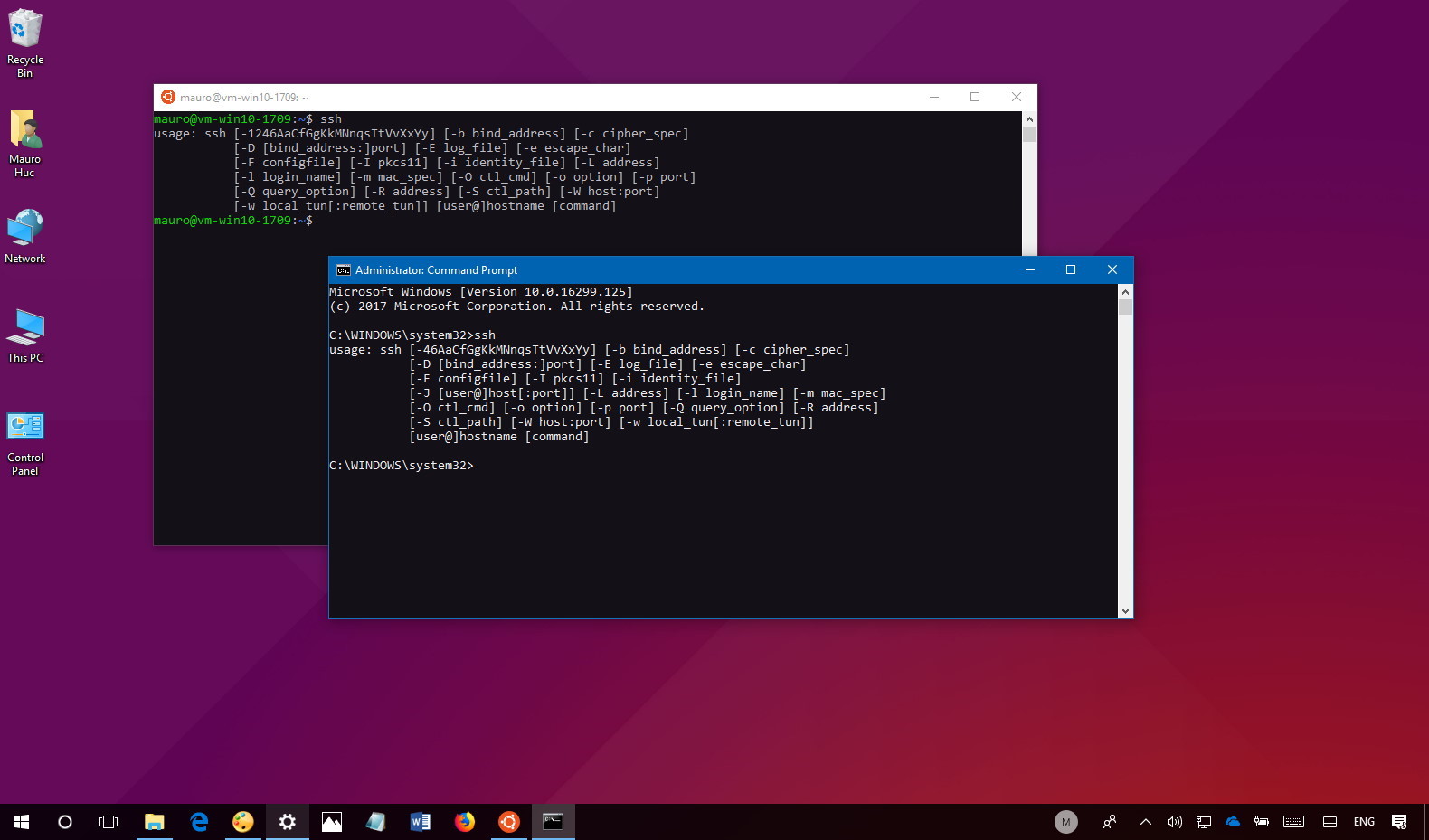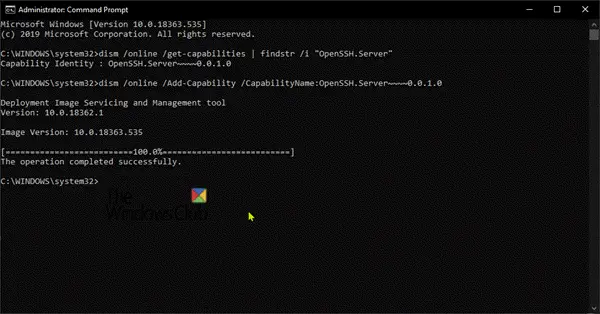

- #OPENSSH DOWNLOAD WINDOWS HOW TO#
- #OPENSSH DOWNLOAD WINDOWS INSTALL#
- #OPENSSH DOWNLOAD WINDOWS UPDATE#
- #OPENSSH DOWNLOAD WINDOWS PORTABLE#
As a best security practice, it is recommended to use the latest OpenSSL version on your system. This tutorial helped you for installing OpenSSL on the Windows system. After that type version to get the installed OpenSSL version on your system. Open a command prompt on your system and type openssl to open OpenSSL prompt. Go to “ Advanced” tab and click on “ Environment variables“. Alternatively, you can open Command Prompt and type the same command to open System Properties

Press Windows + R keys together to open run window, Then type “ sysdm.cpl” in the Run dialog box and hit Enter. Set Variables Permanently – You can also set the OPENSSL_CONF and Path environment variables in the system permanently. Use the following commands to set environment for current session only: set OPENSSL_CONF=C:\OpenSSL-Win64\bin\openssl.cfg set Path=%Path% C:\OpenSSL-Win64\bin You are required to set OPENSSL_CONF and Path environment variables. Now set the environment variables to function OpenSSL properly on your system.

Then again run the OpenSSL installer and follow the wizard.
#OPENSSH DOWNLOAD WINDOWS INSTALL#
If your system doesn’t have Microsoft Visual C++ installed, the installer will show your message like:Ĭlick Yes to download and install required Microsoft Visual C++ package on your system. The OpenSSL required Microsoft Visual C++ to be installed on your system. Now run the OpenSSL installer on your system. The above screenshot may be outdated but we recommend downloading the most recent version of OpenSSL. Click the below link to visit OpenSSL download page: You need to download the latest OpenSSL windows installer file. This tutorial will help you to install OpenSSL on Windows operating systems. So we recommend installing the latest version of OpenSSL on your windows system. Data security is always a high priority for everyone. It is licensed under an Apache-style license.
#OPENSSH DOWNLOAD WINDOWS HOW TO#
If this is too difficult, install WinSCP instead.You'll still have to know how to use the command line, but it doesn't mess with the PATH variable.OpenSSL is a full-featured toolkit for the Transport Layer Security (TLS) and Secure Sockets Layer (SSL) protocols. Need other things added to the PATH variable? Remember to use the between entries. Now I can continue to use my Windows command line like I did before, but I can also use OpenSSH with equal ease, and I'm very thankful, as I can now access my Linux server(s) from my work computer, which has to be Windows (I would rather have Linux, but.) My Windows PATH looks like this, now:Ĭ:\Program Files (x86)\OpenSSH\bin C:\WINDOWS\System32 The simplest solution is to copy the current PATH, install the program, then add the original PATH back in using a simple between the two entries. In the new Window, navigate to Apps, and Select Optional Features under Apps &.
#OPENSSH DOWNLOAD WINDOWS PORTABLE#
Our objective was to not only port OpenSSH so that it worked well on Windows, but to openly contribute those changes back into the portable version of OpenSSH. Easy fix, though, as I've had to play with the PATH in Windows in the past, and Google can quickly tell me what it should be if I forget. Back in June, we announced our intentions to bring SSH to Windows by supporting and contributing to the OpenSSH community. In the Windrelease, OpenSSH was released as a supported feature on-demand.
#OPENSSH DOWNLOAD WINDOWS UPDATE#
I admit that I didn't read the reviews first, and found myself in the same boat. The OpenSSH client and server are now available as a supported Feature-on-Demand in Windows Server 2019 and WindThe Win32 port of OpenSSH was first included in the Windows 10 Fall Creators Update and Windows Server 1709 as a pre-release feature. ERMAHGERD! Installing this package overwrites the PATH variable in Windows.!Īnyone who knows enough about command line use to install OpenSSH on a Windows machine really SHOULD know enough about the PATH variable to adjust for this problem.


 0 kommentar(er)
0 kommentar(er)
